Back pain becomes more and more prevalent as people reach middle age, especially lower back pain.
According to the Harvard Special Health Report Men’s Health Fifty and Forward, about four in five Americans will deal with back pain at some point in their lives, with both men and women equally impacted.
Over time, as we age, the bones and joints in our lower backs begin to change, as the discs (the structures that serve as cushions between the spinal bones) begin to weaken and wear out, and even sometimes become fragmented. It’s these structural issues that can begin to cause pain, where it wasn’t before.
While it occurs less often, another cause of low back pain can be the result of a herniated disc. Occasionally, a disc will push outside the space between the bones and compresses a nerve near the point that it branches off the spinal cord. The static nerve that leads down to the buttocks and leg is caused to spasm and results in a pulling pain, called sciatica.
However, in most cases low back pain stems from a strain or a sprain due to unaccustomed activity, excessive lifting, an accident, or simply because it has been overused. Most cases can be solved by just resting, waiting to see if the pain resolves on its own.
Depending upon the severity of the pain, and the source, there are some home remedies that are worth a try to help and ease the discomfort. But after giving these a whirl, should the pain continue to persist through the fourth day, it’s time to contact your physician.
Heat and Cold Therapy
Immediately following an injury, it is best to use a cold compress or an ice pack, not heat, since this can alleviate pain by numbing the area, and help to prevent or reduce the swelling. But after about 48 hours after the onset of back pain, using a heating pad or hot water bottle can be helpful. The warmth will act to relax the aching muscles and increase the blood flow and will soothe the area and help with the healing process. It is important to understand that heat therapy will only be helpful for the first week after pain hits.
Limited Bed Rest
Bed rest was widely considered the mainstay treatment for back pain for a long time but has recently fallen out of favor. Today’s medicine has proven that it’s better to keep your muscles moving, such that they don’t stiffen up. While bed rest can be useful for relief, particularly if your pain is severe and flares up while sitting or standing, try and limit the time at rest to a few hours at a time, for just a couple days.
Unconventional Therapies
There are several types of complementary therapy that may help to alleviate some of the discomfort and pain associated with lower back pain.
One of the most common pain-relieving therapies that are used for lower back pain is acupuncture. This method involves a therapist inserting hair-thin sterilized needles into precise points in the body to release blocked energy. Another approach is spinal manipulation, in which a chiropractor applies pressure directly to the back in an effort to correct spinal alignment. Therapeutic massage can also serve to relax aching muscles and movement therapies, such as yoga and tai chi can help to stretch and strengthen back muscles while providing a calming effect on your mood.
Evidence is mixed regarding the effectiveness of these therapies, but when they do work it is often combined with other home remedies, and when in pain, any relief is typically welcome.
Physical Activity
By doing exercises you can strengthen your lower back and help to alleviate and prevent lower back pain. These actions can also strengthen your core, arm, and leg muscles. Exercise helps to build strong, flexible muscles and as such making them less prone to injury. This can also help the healing process after an injury, prevent future problems, and improve function. It is extremely important that before you start an exercise regiment, consult your doctor to develop a program or seek the advice of a physical therapist who can help.
Keeping active can help, either by just walking, or taking on some more rigorous activity such as jogging, biking, or playing golf – but be sure to walk. Just putting around the living room on your indoor putting green won’t help that much. But do use caution, however, as sports like golf, in which repetitive twisting is often involved, can either result in relief, or strain, to the lower back. So before grabbing your golf shoes and bag, take a few swings in the yard to make sure.
Researchers have found that exercise also increases blood flow to your lower back area, which can speed up the healing process and reduce stiffness.
It is very important to choose an appropriate form of exercise or physical activity. Obviously, just taking off for a run, or to just start lifting weights wouldn’t be the smartest idea without having a plan. But there are some great exercises that can help to alleviate lower back pain. Since you’re dealing with pain, be certain, to begin with, a gentle workout and listen to your body should your pain get worse. Working to stretch muscles that are normally tight during episodes of lower back pain can strengthen muscles which tend to be weak.
Before starting any exercise, be sure to warm-up and stretch your muscles so they are ready for work. Never bounce during stretching and allow for a slow, gradual stretch. Avoid overstretching, holding each muscle for about 20-30 seconds.
It is important to get a proper diagnosis of your back pain, to find out exactly what is causing the discomfort through a movement examination, so you can proceed with some exercises. Here are a few that can help.
Lower Stomach Strengthening
By making the muscles in your lower stomach stronger, you are helping your lower back. These muscles work in partnership with the lower back, and when weak can cause your lower back to tighten up, leading to lower back pain.
To help accomplish this, lie on your back with your knees bent and feet flat on the floor. As you bring one knee towards your chest, breathe in and breathe out as you return it to the floor. Repeat this six to eight times on each leg. It’s important to note that if your back hurts at any point in this exercise, it is not for you.
Deep Abdominal Strengthening
The transverse abdominis provides a great deal of support for the lower back, and as such is a very important muscle to keep strong. Many people with lower back pain suffer from a weakened “trans-ab”, but there is a very gentle and safe way to give it some strength.
First, lie on your back with a small cushion set under your head, and bend your knees. Keeping your feet hip-distance apart and placed on the floor, relax your upper body with your chin tucked in. Next, take a deep breath in, and as you breathe out, focus on drawing your belly button in towards your spine. Hold the contraction for about five to 10 seconds, repeating this five times.
The Bridge
There is a steadfast exercise for mobilizing the lower back, and it’s called “The Bridge.” To carry out this exercise, first, lie on your back with knees bent and feet placed hip-distance apart on the floor. After a deep breath, as you breathe out lift your hips off the floor until shoulders hips and knees are in a straight line. As you breathe in, lower your hips back to the floor, repeating this eight to twelve times. Again, there should be no pain in your back when doing this exercise.
Pelvic Tilts
Another great exercise for working out your lower back muscles is the Pelvic Tilt. Again, while lying on your back, place a small cushion under your head. Then, bend your knees, keeping your feet hip-width apart and on the floor. Keep your upper body relaxed with your chin gently tucked-in, and gently flatten your lower back into the floor and contract your stomach muscles. Next, tilt your pelvis towards your heels until you feel a gentle arch in your lower back, feeling your back muscles contracting and return to the starting position. Place one hand on your stomach and the other under your lower back to feel the correct muscles working. Repeat eight to twelve times, tilting your pelvis back and forth in a slow rocking motion.
Like the other exercises, there should be no increase in low back pain, and it should actually be easier to do this after using your hands to mobilize the area and release the tightness.
All these steps to deal with the minor onset of lower back pain, or reducing the risk it showing up in the first place, can be incorporated into a daily routine. Exercising regularly, maintaining a healthy weight, lifting with the legs, and not the low back are all good ideas, to begin with.
If nothing else, simple activities such as speed walking, swimming, or stationary bike riding 30 minutes daily can increase muscle strength and flexibility and protect your low back from injury or strain. Frequent stretching can help loosen muscle tension, strengthen your core muscles, and improve overall posture for a healthier back.





























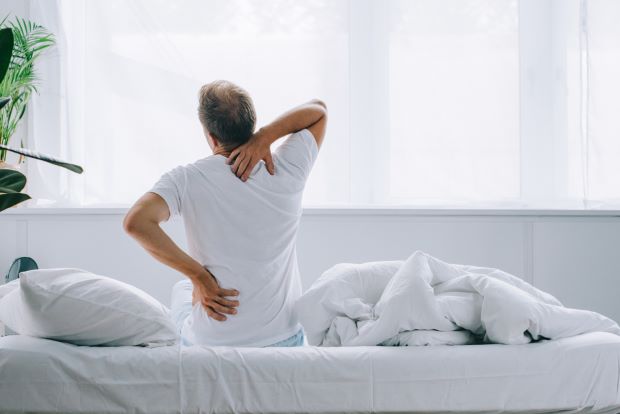
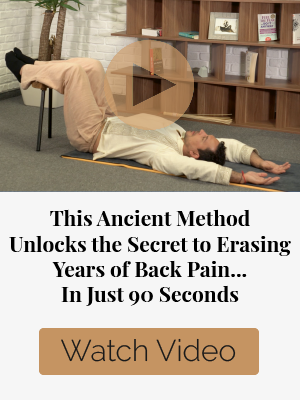
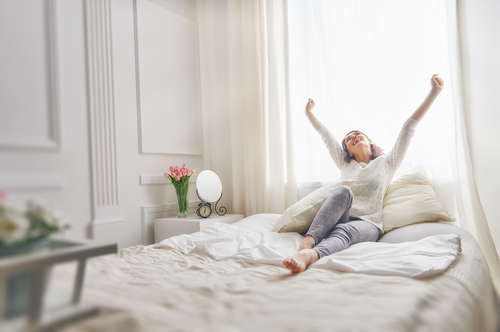
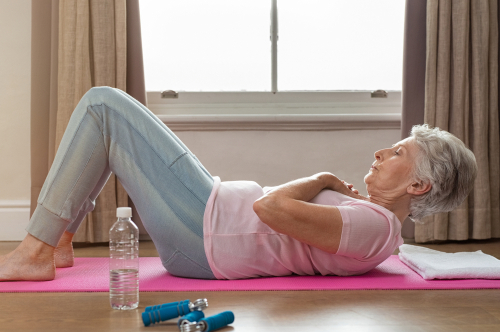
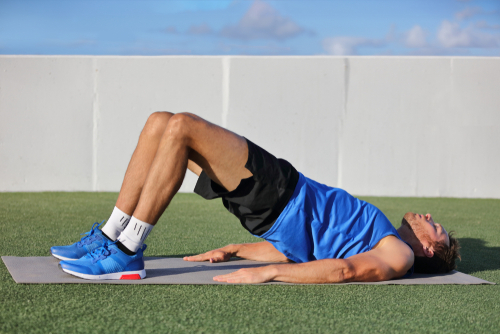














































Great article. Thanks for this type of information.